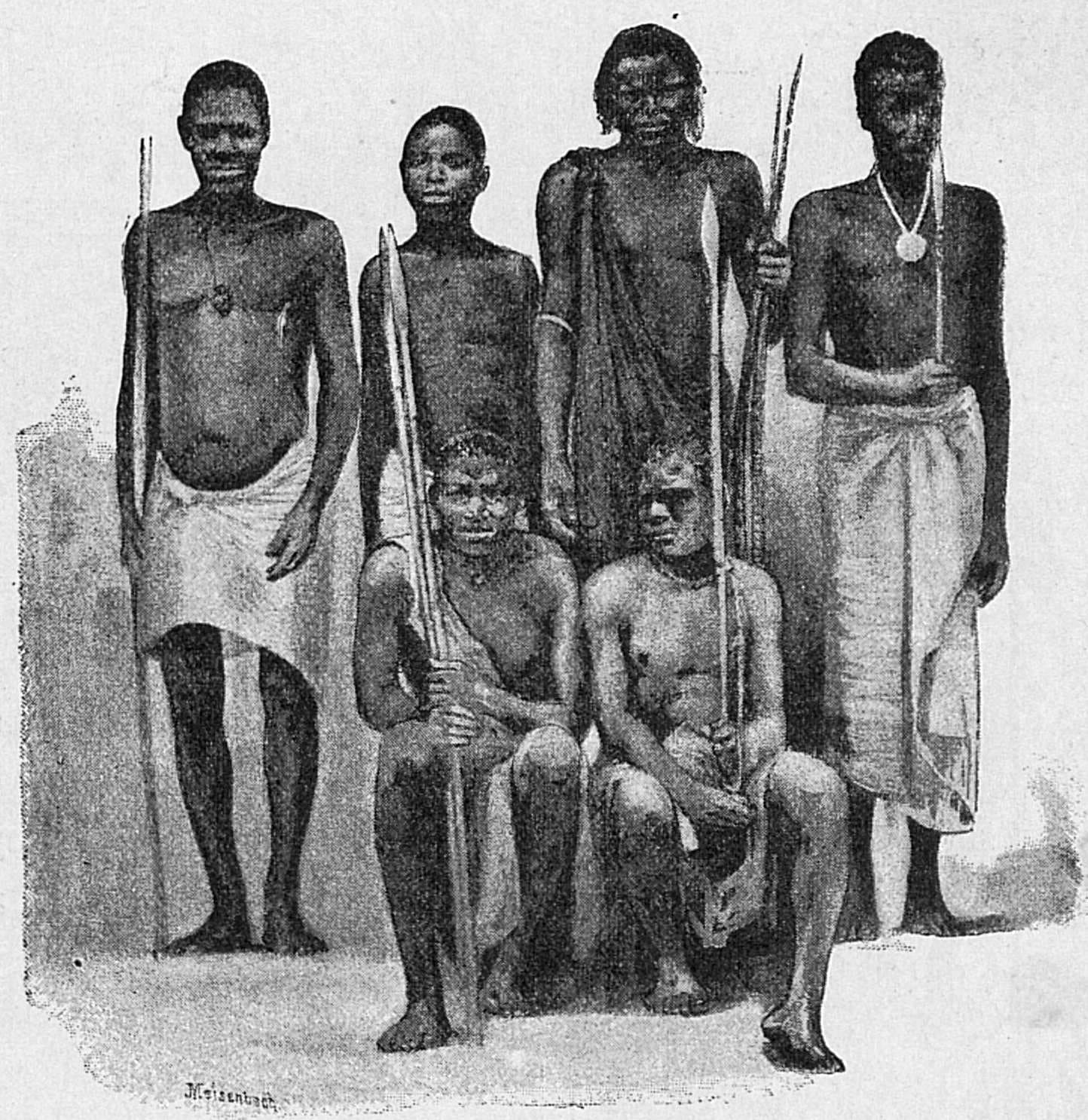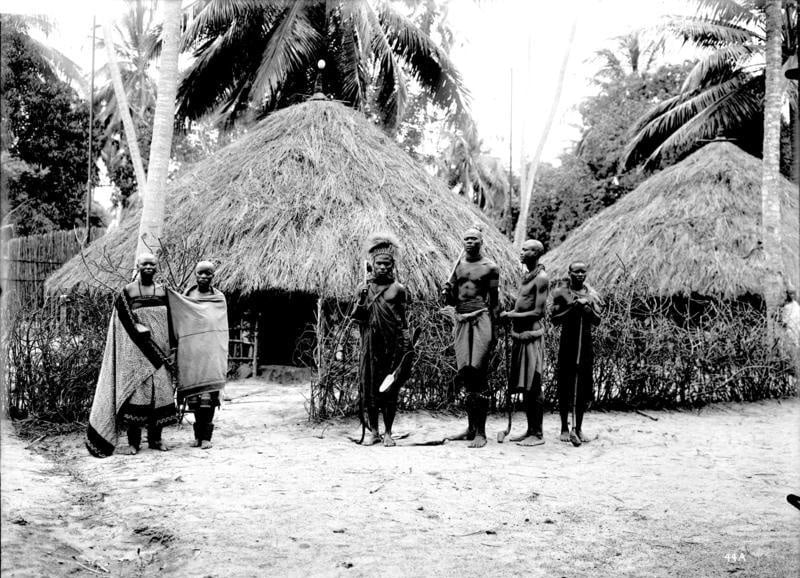Sukuma People (Sukuma Tribe of Tanzania) – History, Culture, Homeland and More
Sukuma people are also known as the Bantu ethnic tribe, and they originated from the Great Lakes area, southeastern Africa. With approximately 10 million Sukuma residents or 16 percent of Tanzania’s total population, they are the largest tribe in the country. Sukuma is translated in Swahili as “North” and talks about “citizens of the north.” They also used terms like Wasukuma for plural and Msukuma for singular to call one another.
Homeland of Sukuma Tribe in Tanzania
Thousands of Sukuma people live in northern Tanzania, on or beside the southern coast of Lake Victoria, and in various sections of the Mwanza, Shinyanga Region, the southwestern corner of Mara Region, and Simiyu Region administrative districts. Their home is located in the Serengeti Plain to the north. Families from the Sukuma have moved south into Katavi and Rukwa regions, advancing on the Pimbwe territory. Many of these Sukuma have made their homes outside of the Pimbwe villages.
The Sukuma area is primarily a leveled, scrub-free savannah plain around 910 and 1,220 m[3,000 and 4,000 feet]. From November through March, the rain falls in 20 to 40 inches, which is 51 to 102 centimeters daily. The High temperatures are between 26 and 32 degrees celsius [79 and 90 degrees faranhiet], and lows at night rarely fall below 15 degrees Celsius [59 degrees faranhiet]. The people are dispersed among local farm fields and scanty vegetation.
History of the Sukuma People
All members of the five classes in Greater Unyamwezi recognized themselves as Wanyamwezi to everyone outside of the “greater” territory but used Sukuma within themselves. When communicating to Nyamwezi, they refer to themselves as “Sukuma” [Northerners], but everyone else refers to them as Nyamwezi. The Nyamwezi–Sukuma network can be named so because, while they were never united, they had a lot in common in terms of mentality and lifestyle. Like so many of their neighbors, they were just an ethnic group split into several smaller groupings. Others speculate that they were Nyamwezi people who had fled Mirambo‘s attacks to the northwest, causing wildlife and tsetse to reclaim the empty territory.

Unyanyembe, the Nyamwezi’s most powerful kingdom, was located on Tabora and relied on the Sukuma for meat. However, by 1892, the herds of cattle had continued to decrease due to tsetse fly and rinderpest. However, two-thirds of GEA[German East Africa] had become inadequate for livestock and farm animals. In general, it had not recovered until, after WW1, the Sukuma preserved massive proper herds of cattle. The latter was already able to avoid any significant social changes by utilizing the herds for economic purposes. According to Sukuma tradition, hunger became more common around the end of the eighteenth century, prompting traditional Sukuma to blame religious reform for catastrophic events and demand frequent offerings for family or chiefdom forbears.
The Sukuma, like all Nyamwezi, ridged all their fields to fit the fertile but arid terrain, as would all Nyamwezi. They had herds at almost the same time, which they had obtained again from Tatoga natives, and they were also not called pastoralists because “mixed” agriculture was conducted. Fortunately, Sukumaland also utilized iron reserves, with 150,000 iron hoes being re-exported to Tabora.
Sukuma Tribe Culture
Sukuma witchcraft – The Sukuma Tanzania natives believe in supernatural forces and see the world as a whole, with all living organisms, supernatural and natural, interconnected.
Sukuma Traditional Medicine
Many ethnic groups, including the Sukuma, use animals in traditional treatment, sometimes known as “zootherapy.” Many people in Africa, notably the Bight of Benin and the Swaziland Inyangas, feel that traditional animal-based treatments are more beneficial than Western medical sciences. For centuries, Sukuma medicine has been based on plants and animals; however, plant remedies are now more commonly employed. These same Sukuma people have a naming system to differentiate between animals based on their medical uses. Herbalists create a list of common ailments and associated symptoms before compiling a list of animals, plants, and their medicinal capabilities.
Herbalists are in charge of deciding where as well as how each animal will be used within the community. Pangolins, for example, are thought to have been a sign of a good agricultural year; thus, herbalists may sell pangolin scales to save crops. Since reptiles and porcupines represent a risk to society and livestock in Sukumaland, medicine men and healers use them for entertainment purposes.
Even though most of the study done on the Sukuma culture group’s medicinal practices has indeed been plant-based, there seems to be no information about the tribe’s use of animals in healing. Another study was carried out in Tanzania’s Busega District, which includes Lake Victoria and the Serengeti National Park, to determine which faunal resources medicine men use to cure diseases in the village. Specific indigenous cures, known as Dawa, are no more used since many Sukuma tribe people choose to use Western treatment more.
One of the most severe threats to Tanzanian conservation is the legal and criminal trade in wild animals as pets. In addition, there are no legal laws in place to regulate the evaluation of endangered wildlife. Professional hunters pose a greater danger to conservation efforts than herbalists. Herbalists and other healers always hunt just what is required for their practices, unlike the latter tribes[professional hunters] in the community. The Sukuma people use animal resources for different purposes other than medicine, such as art and fashion. Animal hides, for example, are often used to design homes and make purses.
Sukuma Religion
Islam is primarily practiced in urban areas among the Sukuma. There are multiple mosques in Mwanza with huge congregations of both Sukuma and other ethnicities. Sukuma Muslim communities gather in smaller mosques in more rural regions to pray.
Sukuma Cultural Relationships

Both Sukuma and their non-Nyamwezi bordering friends, the Tatoga, had usually cordial relations and could not see each other as rivals because they were highly interdependent. Basically, the Tatoga required the Sukuma’s grain, while the Sukuma required the Tatoga’s cattle and highly renowned rainmaking diviners [Tatoga were always regarded as the best at this incredible and highly specialized operations]. Another group called the Maasai, on the other hand, were viewed as adversaries. This Tatoga–Sukuma relationship was based on economic and cultural interaction, whereas the Sukuma–Maasai relationship was based on hatred and fear because the Maasai only desired cattle from the Sukuma, believing that God had given the Maasai all the world’s cattle. It’s still likely, though, that several healthy partnerships existed. So, like the Nyamwezi, The Sukuma was very cautious in what they accepted as a society; they could assimilate others but could not incorporate themselves into other communities. According to one Sukuma legend, when they moved from the north, the Tatoga [Taturu] became their commanders and chiefs; the Taturu were cattle herders who wanted broad plains for their animals; thus, they relocated into the more broad Serengeti area. Many Sukuma remained closer to the Nyanza [Lake Victoria], where they cleared the forests and became farmers. And after the Taturu went out to the plains, they placed Taturu authorities in charge of the Sukuma. As a result, even when they were now within the Sukuma territory, all chiefs and important headmen continued to refer to themselves as Taturu until the chieftain system was abolished.
The Sukuma chiefs – Since the sixteenth century, when the region started to be governed by chiefdoms that followed a hierarchical structure rather than by villages, the function of the chief in Usukuma has undergone several changes. This happened when the Babinza, Bakwimba, Balongo, Bangolo, and Basega migrated. These new people were primarily in charge of uniting the local clans and the sparsely inhabited territories in the Lake Victoria region under their control. The indigenous people and their external customs are now referred to as Wasukuma. To chop down trees or remove a bush is the literal meaning of the Kisukuma term for chief, ntemi, which is derived from the verb Kutema. This is reminiscent of the early chiefs’ role in blessing the newly cleared land at the start of each farming season. It might also be a reference to the stopping of disputes after a significant debate among village elders.
Sukuma food – Though many also maintain cattle, the Sukuma have a diverse economy that is mostly centred on subsistence farming. The main crops are millet, sorghum, and corn (maize); cotton was recently added as a cash crop.
Sukuma Traditional Marriage
Marriage with bride-wealth and marriage without bride-wealth are the two basic types of local marriage. In a bride-wealth marriage, the husband often receives complete custody of the children his wife bears. He should get bride-wealth and provide it for his sons, and his offspring should inherit from him. He is also entitled to pay for his wife’s adultery under customary law. If no bride-wealth is supplied, yet compensation is not generally paid, adultery is still a violation. Children of non-bride-wealth partnerships are primarily the property of maternal relations, unless the father provides redemption payments for them.
Sukuma and Nyamwezi
The Nyamwezi [also known as the Dakama, or inhabitants of the south] and the Sukuma [also known as the inhabitants of the north] are two essential tribes who live primarily in the south of the shores of Lake Victoria in the Tanzania west-central region. In terms of their traditional names, they say they are “Basukuma” [sing. Musukuma], and “Banyamwezi” [sing. Munyamwezi], and they refer to their hometowns as “Unyamwezi” or “Bunyamwezi” as well as ”Basukuma”. People sometimes use the term “Sukumaland” when they talk about the area around Sukuma. The word “Sukuma” translates to “north” but has come to be used to identify ethnic groups.
Both Nyamwezi and Sukuma area is situated between 2°10′ and 6°20′ south and 31°00′ and 35°00′ east. Sukumaland, which covers the eastern Shinyanga Region and the Mwanza Region, sits to the north and east of Nyamwezi’s “home” territory in the Tabora Region and western Shinyanga Region. There have been many migrations flows in and around these locations, and descendants of both tribes have resided on the coastline and everywhere else. Sukuma and individuals of other cultural minorities, such as Tutsis and Sumbwa, are frequently found in Nyamwezi settlements, but Sukuma communities seem to be more ethnically homogeneous. During the colonial period, the Sukuma acquired control of the Geita territory of Mwanza District, and they have subsequently expanded further towards the west as well. They’ve already extended outward into Nzega Region and the nearby Igunga Region, and several have made their way into Tanzania’s southern highlands and Zambia.
Political activities, such as colonial cattle-culling laws, as well as local congestion and poor soil conditions, have driven numerous Sukuma migration. These 2 lands combine to form a broad, undulating plateau, with most of them elevated between 1,150 and 1,275 m [3,773 and 4,183 feet]. There are multiple rivers in the area; however, most of them dry up throughout the summer. Each year is divided into two seasons: a rainy season that lasts from November to April and a dry season that lasts the year’s remnants.
The annual average rainfall for almost all of the Sukuma region seems to be about 75 cm [30 inches]. For Unyamwezi is about 90cm [35 inches]; however, there are many variances throughout the year and from location to location. There is a consistent progression of soil and crop zones throughout the region. The top levels consist of dry forest covered with trees from the Brachystegia-Isoberlinia union; these places are known as a miombo territory named after 1 of these trees. Shorter vegetation and thornbush steppe are also prevalent, and huge stretches of grassland savanna intermingled with baobabs can be found in Sukumaland.
Other Important and Popular Things in the Sukuma World
- Sukuma language words:
-
- Greetings in Sukuma language:
- Mwangaluka – Good morning!
- Madelagawisa / Mwadela – Good afternoon
- Wabeja – Thank you!
- Greetings in Sukuma language:
-
- Sukuma dictionary – Get the most of your Sukuma language translation from the Glosbe Sukuma language dictionary
- Sukuma music:
- Sukuma songs – https://www.youtube.com/watch?v=HuzrwHyBT-c
- Sukuma traditional dance (Sukuma dance Tanzania) – https://www.youtube.com/watch?v=-zCX5lF4FfA&t=1s
- Sukuma museum Mwanza – http://sukumamuseum.org/
For more articles on the Tanzania Tribes click here!


































